Tips for you when designing the roof and things to remind.
The roof is one of the important architectural components of the house. The roof design greatly affects the use of the homeowner later. So how to design the roof to ensure aesthetics as well as safety of homeowner and in order for it to fulfill that role and function, the family should not ignore below important notes when designing.
Roof construction.
For traditional houses, purlins are usually placed at the top of the roof and extend from East to West. Besides, purlin is also covered with red cloth at both ends and hung an amulet to prevent bad energies, affecting feng shui of the house.
As for modern houses today, purlins are not placed at the top of the house anymore, but they usually put 2 purlins close together on the top of the roof to create balance. In addition, there are also some families who choose to build flat roofs to save time in construction and design as well as to save costs.
Heat resistant solution.
The roof design creates cool air on hot summer days. This is also the reason why the ancients often used straw to make roofs. Therefore, according to the purpose of use, we need to choose appropriate anti-heat methods.
- Choose the right roof material.
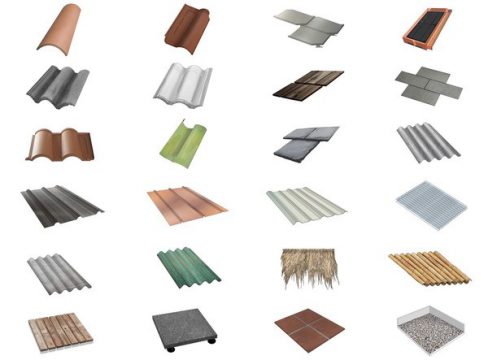
Commonly used materials to prevent roof heat are:
– Terracotta and clay tiles: Tiles made of clay are usually light in color and do not retain heat. Produced by modern technology, both terracotta and clay tiles have the ability to reflect heat and cool the house well. Tiles are molded in an S-shaped form to create an interlocking arch to help drain water quickly and circulate air evenly.
– Black stone tile: This type of tile has high durability, less maintenance, especially natural heat reflection, helping to reduce the amount of heat absorbed into the house. However, its disadvantage is great weight and high cost.
– White flat concrete tile: This is a type of tile belonging to the group of high-strength materials, reflecting up to 77% of sunlight, suitable for roofing in hot climates.
– White metal roof: The white metal roof has the ability to reflect 66% of solar energy. Compared with other roofing materials, this roofing sheet cools faster at night, keeping heat in a short time. The metal used for the roof is usually aluminum, steel, copper and anti-corrosion technology is applied to it. However, the cost of a metal roof is usually 20-30% higher than that of a traditional roof.
– Roof with photovoltaic system or solar panels: This type of roof helps convert solar energy into electricity. The size and shape of panels are similar to traditional shingles, so they do not affect the aesthetics of the house.
- Use heat-resistant paint.
Heat resistant paint is commonly used for corrugated iron roofs. The use of heat-resistant paint for corrugated iron roofs is capable of effectively reducing heat from 12 to 26 degrees Celsius when the roof temperature is above 60 degrees Celsius. The higher the temperature is, the greater the difference in temperature outside and inside the house will happen to prevent heat transfer and light reflection, resists the sun’s rays.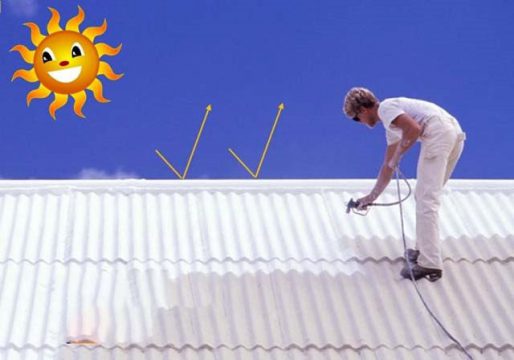
In hot weather, using anti-heat paint will increase labor productivity and save energy, protect and increase the durability of corrugated iron roof as well as reduce the noise on the corrugated iron roof when the rain pours down.
- Use insulated roofing sheets.
This heat-resistant method of corrugated iron roof is mentioned last because this is the most optimal, long-term, implemented since the very first stage of construction, not as other additional and temporary heat-resistant methods.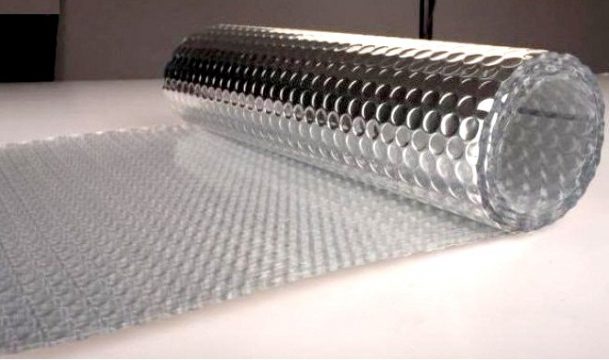
When using insulated roofing sheets, you do not need to use any other additional insulation methods, you can even use the air conditioner directly in the room without fear of “losing cool air” and consuming electricity.
- Use sprinkler system on the roof.
The sprinkler system on the roof (especially the corrugated iron roof) is considered as a simple, economical, safe and eco friendly anti-heat solution. The water flow will significantly reduce the amount of heat absorbed on the roof, create a cool atmosphere, dispell the feeling of stuffiness and discomfort in the hot summer.
- Planting trees covering the roof.
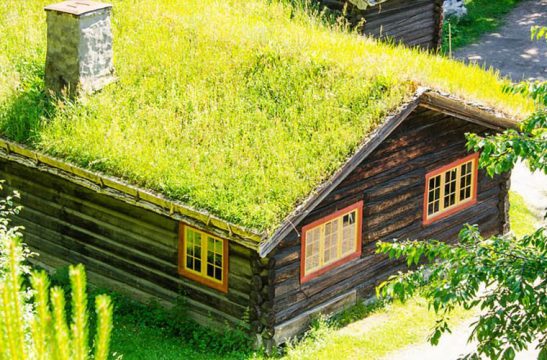
This can be considered as a natural solution, using trees to cool the roof with relatively good heat resistance, bringing a green landscape to the house. However, you should make the trellis frame about 20 cm away from the corrugated iron roof to avoid direct contact with the branches and leaves. In the hot summer, the high temperature of the roof can cause leaves to wither and burn.
Waterproofing for the roof.
Leaky roof not only affects the safety of the building, family’s daily life but it also has bad influence on aesthetics. Homeowners should have a waterproofing solution for the roof right from starting construction to achieve the highest efficiency. Here are some waterproofing methods for popular roof styles these days.
- Waterproofing for concrete roof.
– Use waterproof membrane: There are many types of waterproofing membranes such as cold films, burn-off films with high durability, good waterproofing ability for you to use.
– Spraying or film forming material: You can spray/sweep this liquid material onto the concrete roof to form a protective film that protects the roof from weather conditions that cause seepage.
– Use waterproofing admixtures: In order to increase the waterproofing ability for concrete roofs, you can use this additive to mix with building materials to create sustainability for the structure of building.
– Cement-based spray/penetrating waterproofing chemicals: Although this waterproofing method is easy to apply, the disadvantage is that when exposed to direct sunlight, it will reduce durability and waterproofing ability.
- Waterproofing for tile roof or corrugated iron roof.
The cause of leakage of tile roofs and corrugated iron roofs in rainy season is due to broken tiles, water absorption at nail marks or at joints. Therefore, to waterproof the tile roof, homeowner needs to adjust the tile roof; use a mixture of sand, cement, and waterproofing additives to put a thick layer on the surface of the leak.
With a corrugated iron roof, you should use screws to fasten it to prevent water from seeping underneath. For more effective waterproofing, homeowners can combine with waterproof paint to apply on the screw.
- Waterproofing for flat roofs.
In fact, flat roofs are less prone to leaks than other types of roof. The cause of leak is that the roof material has invisible tiny holes, after a while under the influence of weather conditions, these holes swell and absorb water. To fix it, homeowners can use waterproof paint to paint on the leaky location or use a 3mm thick burn-off membrane to stick the edge on the foot of the wall 15-20cm.
Lightning system.
- Ancient needle technology
Using standard antiquated lightning protection technology includes 3 parts:
- Lightning rod: This part will usually be made of steel and copper plated. Copper can be brass or stainless steel. The needle tip will have a certain length, which depends mainly on the structure of building to be protected.
- Lightning conductor: Conductor is a transmission device that carries lightning current from the collector to the grounding systems. The commonly used material for conductors is bare copper or copper foil.
- Ground wiring system: this part will dissipate the current in the ground.
- Useful cloud dissipating technology.
Lightning protection systems by dissipating clouds are used sparingly for residential housing, mainly used for high-rise buildings and offices because of its high installation cost. To complete this lightning protection technology, 3 parts are also required:
- The terminals emit positive ions: Materials can be stainless steel or copper plated steel. This player will be made with many spiked balls, umbrella shape or bat wings with many spikes.
- Lightning conductors: This device will conduct positive ion currents from the ground and put up positive ion generators. The conductor will be made from bare copper material, with a cross-section ranging from 50 to 70 mm2.
- Ground wire system: The part will dissipate lightning current in the ground. This unit has the same configuration as the grounding system of the above straight hit system.
- Early streamer emission technology
Using early streamer emission technology for lightning protection requires the following 3 parts:
- Lightning rod: This part will emit the early streamer going up and collecting lightning towards it. This head position will be mounted on the support pillar, the average height is about 5m above the top of the structure to be protected.
- Lightning conductor: Lightning stream from the lightning conductor will be transmitted through the grounding system. Materials for making conductors will be bare copper cables or copper foil. The conductor will have a cross-section between 50 and 75 mm2.
- Grounding system: The grounding function and structure are no different from the grounding system of the two technologies above, it is still dissipating the lightning current in the ground.

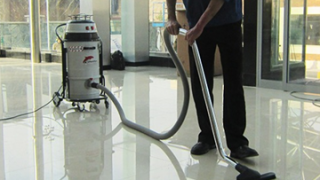
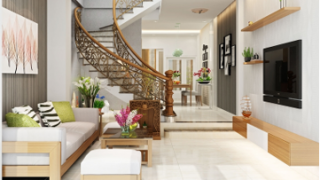
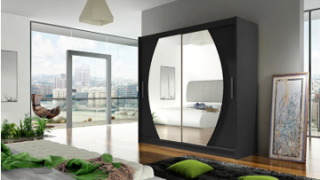
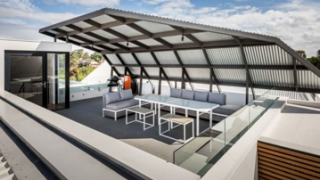
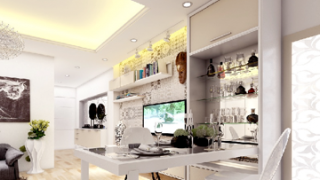
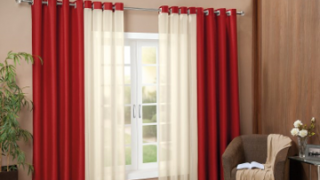
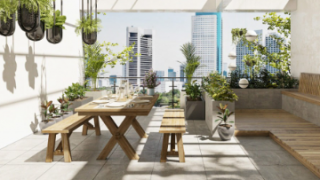
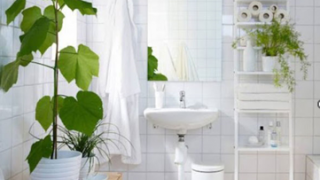
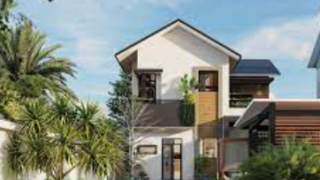
 Continuing the export shipments of clinker and Long Son cement to the United States and Taiwan.
Continuing the export shipments of clinker and Long Son cement to the United States and Taiwan.
 Large-tonnage vessels exporting Long Son Cement to U.S.
Large-tonnage vessels exporting Long Son Cement to U.S.
 Exporting Long Son cement to USA and Brunei market.
Exporting Long Son cement to USA and Brunei market.
 Exporting Long Son clinker to Taiwan and Malaysia market.
Exporting Long Son clinker to Taiwan and Malaysia market.
 Consecutive shipments of Long Son cement and clinker exported to Korea, Taiwan, and Malaysia markets.
Consecutive shipments of Long Son cement and clinker exported to Korea, Taiwan, and Malaysia markets.